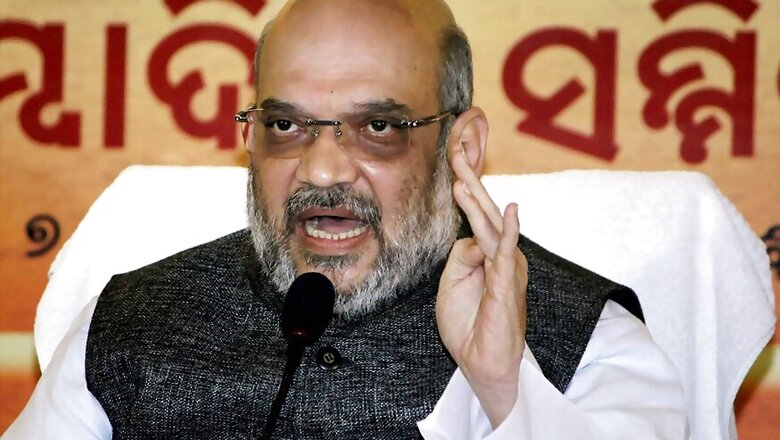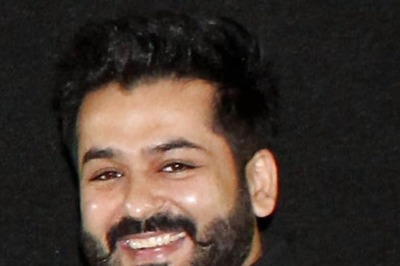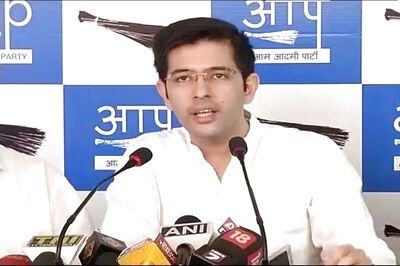
views
Surat/Tapi, Gujarat: In November last year, BJP President Amit Shah was in Surat to address a meeting when it was disrupted. The meeting made news because a handful of youth from the Patidar community flung chairs at the venue. “What went unnoticed that day was that Shah drove an hour east after that to the town of Vyara in Tapi district. Here, he addressed thousands of BJP workers, most of whom were from Scheduled Tribes. This was significant because it is a shift in Gujarat politics. The BJP now wants to pull tribals away from the Congress,” said tribal activist Romel Sutariya.
A BJP leader from South Gujarat, when asked if the ruling party was worried about losing support among the influential Patidars after Hardik Patel’s agitation, said, “It is true that some Patidars will break away from us. They won’t desert us completely but it would not be wise to underestimate the agitation’s effect. We will certainly lose some of the Patel vote but we are confident of making up the deficit.”
The reason the BJP is feeling confident, despite the tide of Patidar resentment, is that the saffron party plans to expand its footprint in the tribal belt of South Gujarat. Scheduled Tribes such as Bhils, Vasavas and Gamits make up around 14% of Gujarat’s population. This is a section of society too large for any political party to ignore.
While Adivasis do not exactly vote as one single bloc, they have traditionally remained in the Congress camp. After all, the state’s only Adivasi Chief Minister, Amarsinh Chaudhari, was a Congressman. Meanwhile, the BJP has maintained a steady presence in the region but has always trailed the Grand Old Party.
The state has a 182 constituencies in the Vidhan Sabha. In the 2007 Gujarat Assembly polls, there were 20 seats reserved for Scheduled Tribes. Of these, the Congress won 11 seats, the BJP won 8 and the remaining seat was captured by the JD (U).
After delimitation of constituencies in 2008, the number of seats reserved for Scheduled Tribes went up to 26. In the 2012 polls, BJP won 10 seats, Congress won 15 and the JD (U) retained its seat. Among tribals, BJP has always been the laggard, but the party is planning to change that.
On Thursday, Shah was in Bardoli to address around 1,200 party workers from Surat and Tapi districts. Once again, the BJP top boss reached out to Adivasis. “Tribals’ development in true sense happened only after the BJP came to power in Gujarat. Congress has always used Adivasis as their vote bank. But now this has become a thing of the past,” he reportedly said.
Ganpat Vasava, the Gujarat Tribal Development Minister, explained why the BJP’s influence in the forest is growing. “If you go to the villages in the forest and ask Adivasis, they will tell that 15 years ago all they had was a dirt road leading up to the village. Today, even in the remotest corners of Gujarat there are good roads. Even though tribals lived near the river, they had to trek to get water. Today, they have water supply in their villages. They have 24-hour electricity. As Chief Minister, Narendra Modi has transformed the lives of Adivasis,” Vasava said.
He added, “Since the Forest Rights Act (FRA) was passed in 2006, the Gujarat government has distributed 13 lakh hectares of land to Scheduled Tribes. This benefited over 85,000 tribals in the state. Our Vikas (development) speaks for itself.”
While Vasava’s claims of basic services reaching forest dwellers is not far from the truth, activists believe there is more to the BJP’s push than meets the eye. Romel Sutariya of the Adivasi Kisan Sangharsh Morcha said here has been an aggressive attempt to ‘Hinduise’ the tribal population over the last few years.
“Many right-wing groups have been conducting Ram Kathas in tribal villages, training young Adivasis to sing the Sundar Kand of the Ramayana and even constructing small Hanuman temples in the forest. The BJP is even trying to make inroads among Christian Adivasis. While Catholics may not leave the Congress, the BJP hopes to gain among Methodists,” he added.
Elaborating on these temples, he said, “Some of the tribes have a custom whereby they place stones in the forest to honor their dead ancestors. A few years earlier, tribals started noticing that some of these stones had four walls coming up around them. A few days later, these walls were painted saffron. Eventually, these became ‘Hullariya Hanuman’ temples. The idea of ‘Hullariya Hanuman’ is to invoke the image of Lord Hanuman as connected to tribals. Nobody knows who is constructing these temples.”
Meanwhile, the Congress claims that the BJP will not succeed in its attempt to wrest the tribal belt from it. Anandbhai Chaudhari, Congress MLA from the reserved seat of Mandvi, said, “BJP has not done nearly enough for Adivasis. The tribals remember that it was the Congress government of Manmohan Singh that had passed the Forest Rights Act. It was the UPA that made sure that tribals would have the first right over the forests. All the BJP had to do was to ensure that the FRA was implemented properly, but they have not done so.”
Both Chaudhari and Sutariya claim that resentment has been building up among tribals against the state government. “There are 90 lakh Scheduled Tribe persons in Gujarat. However, the state government has only accepted 1.82 lakh forms from Adivasis who wanted to claim land under the FRA. Besides, the BJP government has not accepted any forms after 2009.”
In addition to land rights issues, the tribal belt has seen protests over the last few months over the state government’s controversial decision to grant Scheduled Tribe IDs to three pastoral communities – Rabrai, Bharwad and Charan – based in the Gir forest. Many tribal outfits, such as the Bhilistan Tiger Sena, have claimed that these three pastoral communities are “fake tribals.”
Despite this resentment and anti-incumbency, however, the BJP is feeling confident in the tribal pockets. This is because unlike the Patidars, Dalits and OBCs, Adivasis do not have a state-wide leader who can galvanise all these disparate agitations into one single, sustained movement.
Sutariya said the tribals are divided and this will benefit the BJP. “They will be able to manage their message of ‘Vikas’ very effectively on the ground. Besides, the low-key saffronisation happening in the tribal belt will also help them.”
He said the Congress has been dominant in the tribal belt and this is their battle to lose. “The Congress has been taking the tribal vote for granted. BJP workers have been going from village to village to make contact with tribals. If the Congress doesn’t up its game in this belt in the next few days, they will find that it is too late,” Sutariya added.




















Comments
0 comment